
The Australia national rugby union team, nicknamed the Wallabies, is the representative national team in the sport of rugby union for the nation of Australia. The team first played at Sydney in 1899, winning their first test match against the touring British Isles team.

In the game of rugby union, there are 15 players on each team, comprising eight forwards and seven backs. In addition, there may be up to eight replacement players "on the bench", numbered 16–23. Players are not restricted to a single position, although they generally specialise in just one or two that suit their skills and body types. Players that play multiple positions are called "utility players".

Matthew Coleman Burke is an Australian former international rugby union player and sport presenter on Sydney's 10 News First.
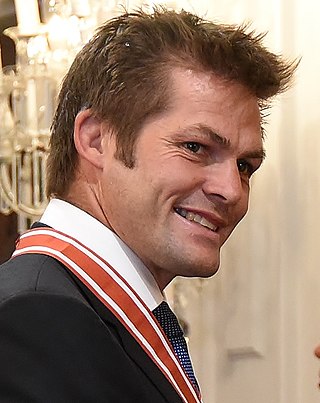
Richard Hugh McCaw is a retired New Zealand professional rugby union player. He captained the New Zealand national team, the All Blacks, in 110 out of his 148 test matches, and won two Rugby World Cups. He has won the World Rugby Player of the Year award a joint record three times and was the most capped test rugby player of all time from August 2015 to October 2020. McCaw was awarded World Rugby player of the decade (2011–2020) in 2021. McCaw is also a winner of the New Zealand sportsman of the decade award.
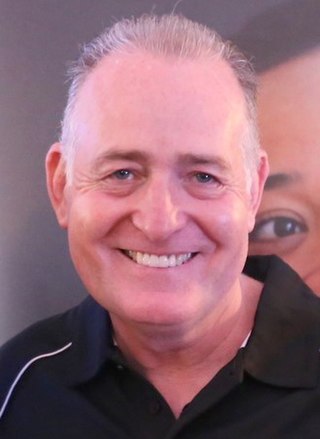
David Ian Campese, AM, also known as Campo, is a former Australian rugby union player (1982-1996), who was capped by the Wallabies 101 times, and played 85 Tests at wing and 16 at fullback. He retired in 1996 and was awarded the Order of Australia in 2002 for his contribution to Australian rugby. David is a now well respected media commentator working in broadcasting and print media for over 30 years. He travels the world as an International guest speaker, delivering his life story which focuses on risk taking, team work and self belief, all of which were instrumental in his dramatic rise to stardom against all odds as an outsider from a small country town. He also works as an Ambassador to businesses, offering value through his internationally recognised brand and influential business network. He has worked with Coca-Cola Amatil, DHL, Adidas, Ladbrokes, and Investec.
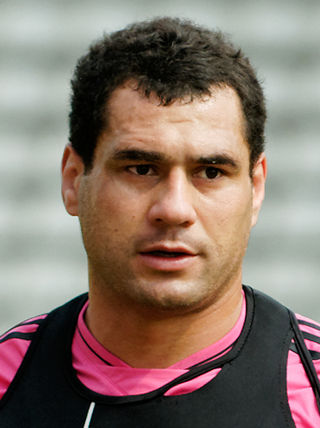
George Smith is an Australian retired rugby union player. He was a flanker for 12 years (2000–10,13) at the ACT Brumbies in Super Rugby, earning 142 caps.
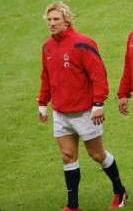
Peter Charles Richards is a former English rugby union player. A versatile player, he has played in three positions: scrum half, fly-half and centre. Richards retired in the summer of 2010 because of a back injury. As of May 2015, Richards became head coach at London Scottish.
Mark Gordon Ella, AM is an indigenous Australian former rugby union footballer. Ella played at flyhalf/five-eighth and was capped by the Wallabies 25 times, captaining Australia on 10 occasions.

Matthew James Giteau is a retired Australian rugby union professional player who last played, for the now defunct, LA Giltinis of Major League Rugby (MLR).
John Edward Thornett, MBE was an Australian rugby union player, who played 37 Tests for Australia between 1955 and 1967 and made an additional 77 representative match appearances. He captained Australia in 16 Test matches and on an additional 47 tour matches on the eight international rugby tours he made with Wallaby squads.
Greg Cornelsen is a former Australian rugby union footballer who was capped 25 times for the national team, the Wallabies, from 1974 to 1982. His usual position was flanker. His son Jack Cornelsen is an international for Japan.
Johannes Lodewikus 'Wikus' van Heerden is a South African former rugby union player who played as a flanker. He finished his career playing for the Lions in Super Rugby, and the Golden Lions in the national Currie Cup competition. Van Heerden also won 14 caps for the South Africa national team, the Springboks. Before his move to the Bulls, he was the captain of the Cats.
Ewen James Andrew McKenzie is an Australian professional rugby union coach and a former international rugby player. He played for Australia's World Cup winning team in 1991 and earned 51 caps for the Wallabies during his test career. McKenzie was head coach of the Australian team from 2013 to 2014. He has coached in both southern and northern hemispheres, in Super Rugby for the Waratahs and Reds, and in France at Top 14 side Stade Français. During his playing days he was a prop and, in a representative career spanning from 1987 to 1997, he played nine seasons for the NSW Waratahs and two for the ACT Brumbies.
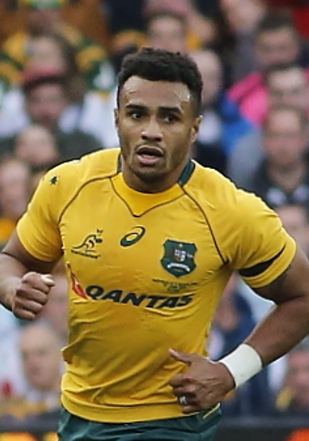
Sanchez William Genia is a professional rugby union player, currently playing scrum-half for the Kintetsu Liners in Japan. He had previously played Super Rugby for the Queensland Reds (2007–2015) and Melbourne Rebels (2018–2019). He also had previously played for Stade Français in France's Top 14 from 2015 to 2017.
Colin "Col" Windon, was a rugby union player and soldier who captained Australia – the Wallabies – in two Test matches in 1951. By age 18 Windon was playing at flanker for his club Randwick in Sydney's Shute Shield. After serving with the Second Australian Imperial Force in the Pacific Theatre during the Second World War, Windon resumed his rugby career in 1946. He was first selected for Australia for their tour of New Zealand that year. Despite the Wallabies losing both their Tests on tour, Windon impressed with his play.

Anthony Alexander Shaw is an Australian former rugby union player. A Queensland state and national representative flanker, Shaw captained the national side consistently from 1978 to 1982.
Rugby union was first introduced into Lebanon both by the mandated French forces, and subsequently by the Lebanese returning from the diaspora. Introduced into other parts of the Middle East, by the British military in the mid 20th Century, rugby has begun to develop across the Arabian peninsula with the establishment of many national rugby federations and the development of the Dubai Sevens.
Between October 1966 and March 1967 the Australia national rugby union team – the Wallabies – conducted a world tour on which they played five Tests and thirty-one minor tour matches. Under the captaincy of John Thornett they toured UK, Ireland, France and Canada winning nineteen matches, losing fourteen and drawing three. At one stage they failed to win in four successive matches although in the Test match against England they gave the home side its heaviest defeat in 16 years. The tour marked the climax of the successful "Thornett Era" of Australian Rugby, buoyed by the leadership skills of skipper John Thornett and the outstanding abilities of greats of the game like Ken Catchpole, Peter Johnson and Rob Heming. Dick Marks and Peter Crittle also toured and would later become among the most influential administrators of Australian rugby.
John David "Brock" Brockhoff was an Australian rugby union identity, a state and national representative who played eight Tests as flanker between 1949 and 1951. He was later coach of the national team from 1974 to 1976, and in 1979. He maintained an active involvement in rugby union in Australia for his entire life.

Michael Kent Hooper is an Australian professional rugby union player who is the former captain of the Australia national team, the Wallabies. His primary position is openside flanker.









